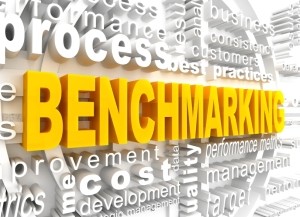
The American Institute of Certified Public Accountants (AICPA) just published a guest post (see here) I recently wrote about the online dynamic benchmarking tool that works with the MAP Survey the AICPA and the Texas Society of CPAs (TSCPA) publish.
The guest blogger format limited me to 600 words or less, so I didn’t get to say everything I wanted to say. Accordingly, I want to add to that discussion a couple of follow-up points.
Bringing You Up To Speed
First, though, a quick overview to bring everybody reading this up to speed.
For years and years, the AICPA and the TSCPA have conducted a statistical survey of several thousand CPA firms. This study results in a wonderful tabulation of firms’ financial and operating metrics, roughly grouping the data by firm size and geographical region.
The beauty and the benefit of the survey has always been that member firms get to compare their operations to their peers’. These comparisons allow firm managers to identify what works well for other people, spot potential opportunities, and avoid financial and operational mistakes.
All great stuff, obviously. But here’s the thing: the survey results were static. Furthermore, the results appeared in tabulations that sometimes, for some users, grouped data into apples-and-oranges summaries.
For example, successful single-owner firms easily got combined with average two-partner partnerships and with mediocre three- and four-partner partnerships. As a result, some of the metrics lost their meaning.
The good news with the new 2014 MAP survey, however, is that by using a dynamic benchmarking website, survey results are not static but rather, well, dynamic. Users of the data can dynamically filter the data used for benchmarking, so the tabulations don’t make apples-to-oranges comparisons.
For more discussion of the survey, refer to the actual AICPA blog post (see earlier link). But now that we’re all on the same page, let me share two additional points I didn’t have space to make in the guest blog post.
Dynamic Benchmarking Gives You the Key to a Treasure Vault of Data
A first quick, almost silly point for any CPAs reading this: To get access to the AICPA’s benchmarking data and tool, you need to do just two things: One, participate in the survey; and two, pay the $35 or so it costs to join the Private Company Practice Section (PCPS).
In other words, getting access to this wonderful information takes a little bit of time and costs not much more than the change you’ve accumulated in the jar next to your computer.
Accordingly, if you’re a CPA firm owner, you have to do this. You just have to. Not participating in the survey, not paying the laughably low fee to join the PCPS, simply can’t be justified if one is serious about running a CPA firm.
Improvement Was to an Old Process
Let me also make a more general point which might be of interest to many small business owners and managers.
This is subtle, but what the AICPA and TSCPA did was dramatically improve a very mature process. In other words, they took something they had worked on for years—and they made a quantum leap improvement.
Maybe it’s just me, but sometimes I think that big meaningful improvements to a business flow out of doing brand new things. Adding a new product or service, for example. Operating a new location, for another example.
But that’s not what happened here. What happened here was the AICPA and TSCPA took an old thing and made a radically good improvement. That’s cool.
Radically improving something “old” or “mature” is also, obviously, a play that many small businesses might want to think about running in all sorts of areas. In fact, maybe we should all be looking at the stuff we’ve been doing largely the same way for years (or decades) to see how we spot opportunities for giant improvements.
(Sort of) Related Posts
A couple of related (loosely-related) posts at this blog explore a couple of similar topics: